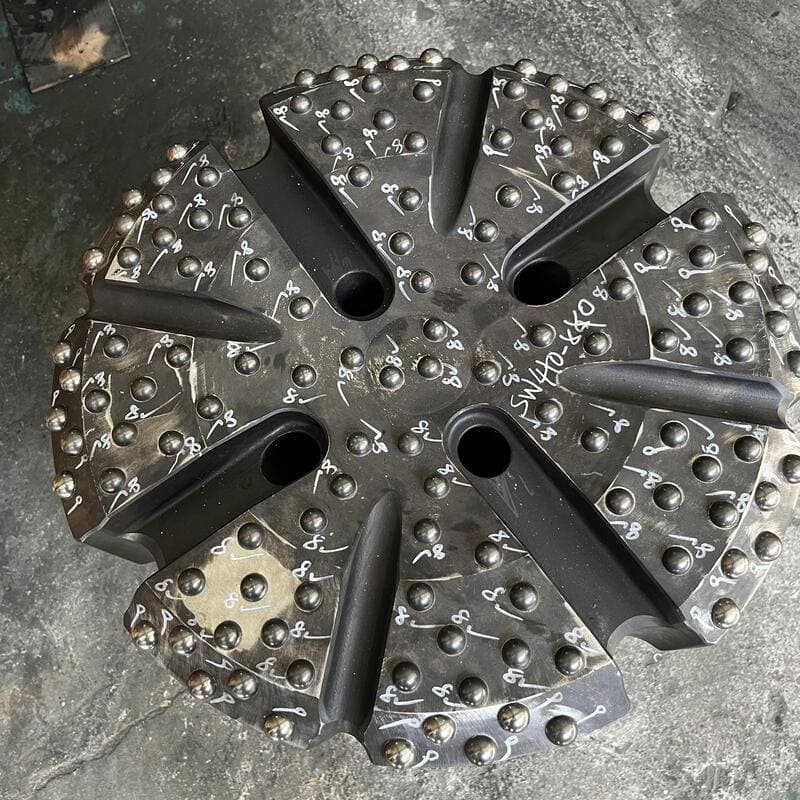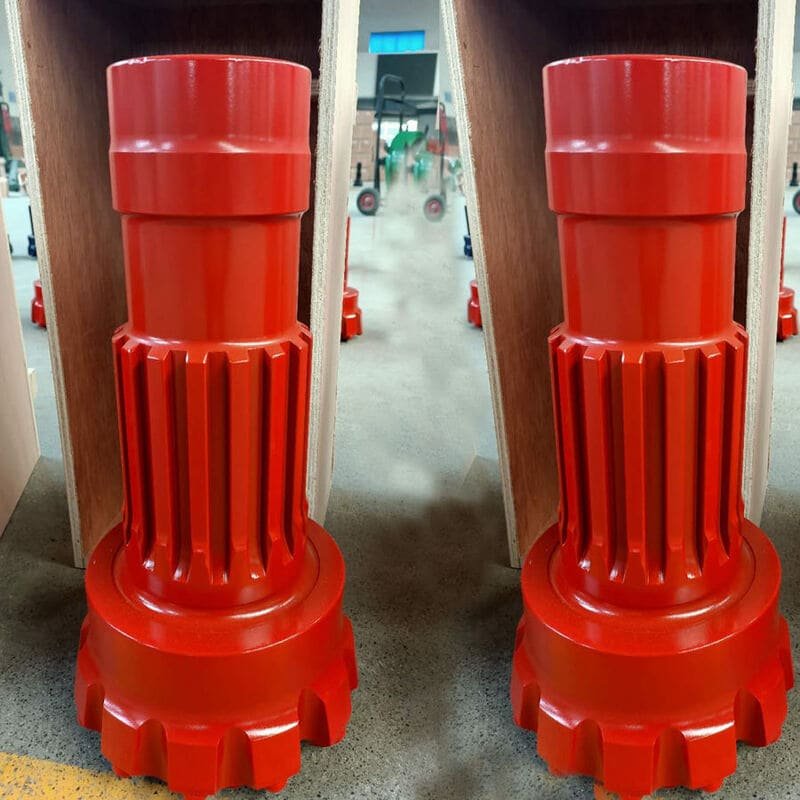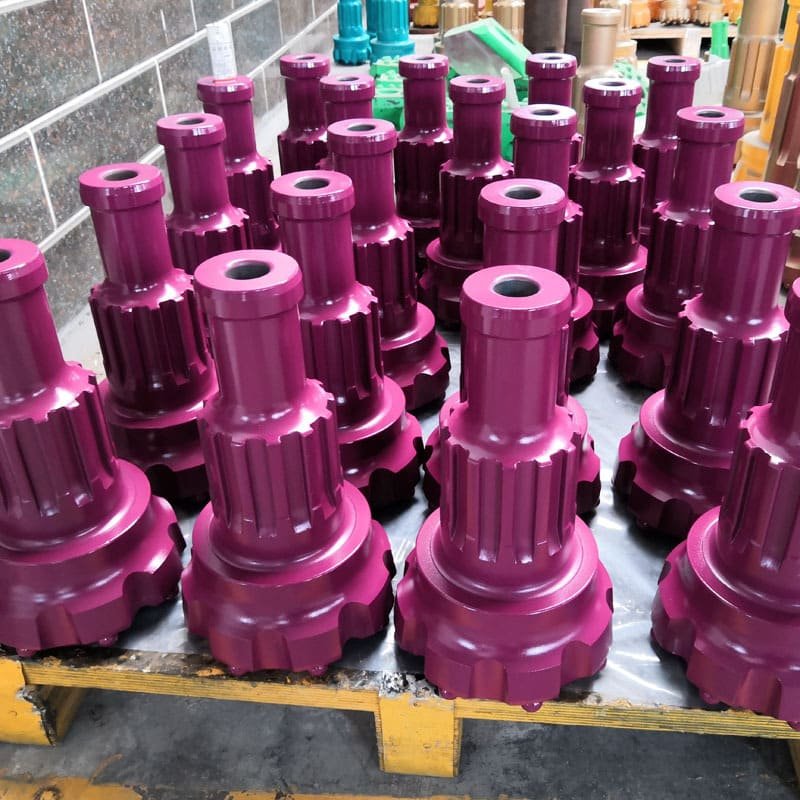As a DIY enthusiast myself, I know the importance of keeping our tools in top shape—especially drill bits! But when should we actually consider replacing them?
To maintain optimal performance, replace your drill bits when they exhibit dullness, wear, or damage. The right timing depends on several factors, including the bit material and how intensively you use them. Regular inspections are key to avoiding inefficiency in your work.
This is just the tip of the iceberg! Dive deeper with me as we explore the nuances of drill bit wear and maintenance, ensuring your projects remain smooth and successful.
Drill bits should be replaced when they become dull or damaged.True
Dull or damaged drill bits reduce efficiency and can cause material damage.
What Are the Signs That Your Drill Bit Needs Replacing?
Recognizing when your drill bit needs replacing is vital for maintaining efficiency and ensuring safety.
Common signs that your drill bit needs replacing include visible dullness, excessive heat generation, and irregular drilling sounds. Additionally, increased effort to penetrate materials and the production of uneven holes are clear indicators. Regularly inspecting your drill bits can help identify these signs early, avoiding potential project disruptions.

Recognizing Visible Wear and Tear
Inspect your drill bits regularly for visible signs of wear. Look for any nicks or dents on the cutting edges. A drill bit that appears visibly dull with rounded edges will not cut efficiently, leading to more significant wear on both the bit and the material being drilled.
Listening for Unusual Sounds
Pay attention to the sound your drill makes during operation. A properly functioning drill bit should produce a consistent, smooth sound as it cuts through the material. If you start hearing screeching or grinding noises, it may indicate that the bit is dull or damaged.
Assessing Drilling Efficiency
A clear sign that a drill bit is nearing the end of its life is a noticeable decrease in efficiency. If you find that you need to apply extra force or pressure to achieve penetration, it’s likely time to replace the bit. Efficient drilling should require minimal effort with clean, easy penetration.
| Sign | Description |
|---|---|
| Dullness | Rounded edges or visible wear on the cutting surface. |
| Excess Heat | Bits becoming excessively hot during normal use indicates dullness or damage. |
| Uneven Holes | Holes that are rough, jagged, or misaligned suggest a compromised bit. |
Monitoring Heat Generation
Excessive heat buildup is another indicator of a worn-out bit. If your drill bits are becoming excessively hot, it might mean they have lost their sharpness and are generating too much friction. This not only wears out the bit faster but can also cause damage to the material and even lead to safety hazards.
Uneven Hole Production
Uneven or misaligned holes are another sign of a failing drill bit. If you notice that holes are not as clean or round as they used to be, it may be time for a replacement. This can be especially problematic in precision work where accuracy is paramount.
By staying vigilant for these signs, you can ensure your projects run smoothly and your tools remain in optimal condition. Regular maintenance and early detection of wear can extend the lifespan of your equipment. Learn more about drill bit maintenance tips1.
Dull drill bits produce excessive heat during use.True
Dullness increases friction, causing excessive heat generation.
A sharp drill bit requires more force to penetrate materials.False
Sharp bits penetrate easily, requiring minimal force.
How Does Material Type Affect Drill Bit Longevity?
The lifespan of your drill bits hinges largely on the material type you're working with. Choose wisely for longevity.
Material type significantly impacts drill bit longevity. Softer materials extend lifespan, while harder materials cause faster wear. Selecting the right bit for your material type ensures optimal performance and durability.

Understanding Material Types and Their Impact
Different materials require different types of drill bits to ensure efficiency and longevity. For instance, using a high-speed steel (HSS) bit2 on soft woods may offer extended life due to minimal abrasion, while hard metals like stainless steel might demand carbide-tipped bits for durability.
High-Speed Steel (HSS) Bits
HSS bits are versatile, making them popular for general-purpose drilling. They excel in softer materials but tend to dull quickly on harder surfaces. Frequent use on metal can lead to faster wear, necessitating more regular replacements.
Cobalt Steel Alloys
Renowned for their heat resistance, cobalt alloy bits are perfect for drilling through hard metals. Although more brittle than HSS, their ability to withstand higher temperatures allows for prolonged use in tough conditions without significant wear.
Carbide-Tipped Bits
These are the champions for precision drilling into extremely hard materials such as stone and ceramics. While their initial cost is higher, their toughness offers longer use before replacement is necessary. However, they can be brittle and require careful handling.
Comparing Material Hardness
| Material Type | Recommended Drill Bit Type | Longevity Impact |
|---|---|---|
| Soft Wood | HSS | Long |
| Hard Wood | HSS/Cobalt | Moderate |
| Soft Metal (e.g., Aluminum) | HSS | Long |
| Hard Metal (e.g., Stainless Steel) | Cobalt/Carbide | Short |
| Stone/Ceramics | Carbide | Moderate |
Tips for Maximizing Drill Bit Longevity
- Choose the Right Bit: Ensure you select a drill bit suited to the material's hardness.
- Monitor Heat Levels: Excessive heat can cause rapid wear. Consider using lubrication when drilling into metals.
- Proper Storage: Keep bits clean and dry to avoid rusting or corrosion.
By understanding how different material types affect drill bit longevity, you can make informed choices that extend the life of your tools and enhance your projects' outcomes. Explore further insights3 on matching drill bits to materials for optimal results.
HSS bits last longer on soft woods than hard metals.True
HSS bits are less abrasive on soft woods, extending their lifespan.
Carbide-tipped bits are best for drilling into soft metals.False
Carbide-tipped bits are suited for hard materials like stone, not soft metals.
Can Sharpening Extend the Life of Your Drill Bits?
Sharpening is a vital skill that can breathe new life into dull drill bits, saving time and money.
Yes, sharpening can significantly extend the life of your drill bits by restoring their cutting edge, improving efficiency, and reducing the need for frequent replacements.

Understanding Drill Bit Wear
Drill bits wear down over time due to friction and heat generated during drilling. This wear manifests as a loss of sharpness, resulting in inefficient drilling and potential damage to both the bit and the material being drilled. Regular sharpening sessions4 can counteract this wear by restoring the drill bit's cutting edge.
Benefits of Sharpening Drill Bits
- Cost Efficiency: Instead of purchasing new bits, sharpening restores the cutting edge of existing bits, reducing overall costs.
- Performance Enhancement: A sharpened bit drills faster and cleaner, requiring less pressure and reducing wear on the drill.
- Environmental Impact: By reusing rather than discarding worn bits, you contribute to reduced waste.
How to Sharpen Your Drill Bits
To sharpen drill bits effectively, you need the right tools and techniques. A bench grinder is commonly used, but manual sharpening with a file is also possible.
Using a Bench Grinder:
- Safety First: Wear safety goggles and gloves to protect yourself from metal shards.
- Setup: Secure the grinder and set the tool rest to a 60-degree angle.
- Sharpening Process: Gently press the bit against the grinder wheel, maintaining the original angle of the tip. Rotate the bit to ensure even sharpening.
Manual Sharpening:
- Tools Needed: A vice to hold the bit and a sharpening file.
- Method: Clamp the bit and file along its edges, following the original contour.
When Not to Sharpen
While sharpening is beneficial, not all drill bits are candidates for this process:
- Overly Damaged Bits: If a bit is cracked or significantly worn, sharpening might not restore its functionality.
- High-Cost Bits: For expensive bits like carbide-tipped ones, professional sharpening services are recommended to avoid mishandling.
By understanding these nuances, you can maximize your drill bits' lifespan and maintain their efficiency across various projects.
Sharpening drill bits saves money.True
Sharpening avoids frequent purchases of new bits, cutting costs.
All drill bits can be sharpened effectively.False
Some damaged or high-cost bits aren't ideal for sharpening.
What Are Best Practices for Drill Bit Maintenance?
Maintaining your drill bits ensures efficiency and prolongs their lifespan, saving time and money.
To maintain drill bits effectively, regularly clean them after use, lubricate to prevent rust, store properly to avoid damage, and sharpen when necessary. These practices help retain sharpness, reduce wear, and enhance performance.

Regular Cleaning and Inspection
After every use, ensure your drill bits are cleaned to remove any debris or material residue that could lead to corrosion or dullness. Use a soft brush or cloth to wipe away particles. Regularly inspect the bits for signs of wear or damage, such as chips or uneven cutting edges.
Lubrication
Apply a thin layer of lubricant on your drill bits before storing them to prevent rust. This is especially crucial for High-Speed Steel (HSS) and cobalt bits, which are susceptible to rust if exposed to moisture. A light machine oil or a specialized bit lubricant can be used for this purpose.
Proper Storage
Store drill bits in a dry, organized environment. Consider using a dedicated drill bit case that offers individual slots for each bit size. This prevents contact between bits, reducing the risk of chipping or blunting. Drill bit storage solutions5 can be explored further for effective organization.
Sharpening Techniques
Regular sharpening is essential for maintaining the cutting efficiency of drill bits. Use a dedicated drill bit sharpener or a bench grinder with the appropriate angle to restore the bit's edge. Sharpening drill bits6 requires precision; incorrect angles can lead to poor drilling performance.
Usage Considerations
Always use the correct type of bit for the material you are working with. For instance, carbide-tipped bits are preferable for extremely hard materials but can be brittle. Overusing a bit on an inappropriate material can lead to premature wear or breakage. Additionally, avoid applying excessive pressure during drilling to extend the bit's life.
By following these best practices, you can significantly extend the life and functionality of your drill bits, ensuring they perform optimally every time you use them.
Lubricating drill bits prevents rust.True
Applying lubricant before storage protects bits from moisture and rust.
Storing drill bits in a pile is recommended.False
Bits should be stored in individual slots to avoid damage.
Conclusion
By staying aware of wear indicators and maintaining your drill bits properly, you’ll ensure they last longer and perform better.
-
Discover essential maintenance practices to prolong your drill bits' lifespan.: In this overview of drill bit maintenance and care, you will learn about the vital steps involved in inspection, sharpening, proper handling, storage, and ... ↩
-
Learn why HSS bits are a versatile choice for various materials.: One of the advantages of high speed steel is you can expect many high speed alloys to reach operating temperatures of 650 degrees. ↩
-
Discover comprehensive tips for selecting the right drill bits.: Carbide drill bits are the pinnacle of strength and durability. These bits have carbon and heavy metals, such as tungsten, in their composition. ↩
-
Learn proper sharpening techniques for extending drill bit life efficiently.: I shows, gives tips, for sharpening drill bits on my grinder - angle, turning. Start by holding the ... ↩
-
Discover organized solutions for storing and protecting your drill bits.: It's probably best to have a Huot cabinet for the duplicates that stays in the shop and then a portable drill case that you refill. ↩
-
Learn precise techniques for sharpening your drill bits effectively.: Start in a comfortable position with your hand against the machine support and take the drill bit into both hands. Hold the bit at a 60 degree angle to the face ... ↩








